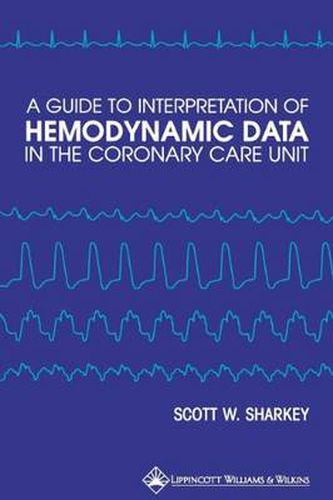Readings Newsletter
Become a Readings Member to make your shopping experience even easier.
Sign in or sign up for free!
You’re not far away from qualifying for FREE standard shipping within Australia
You’ve qualified for FREE standard shipping within Australia
The cart is loading…






Since 1970, when the pulmonary artery catheter was introduced into clinical medicine, the technique of hemodynamic monitoring has expanded rapidly. The use of this essential procedure now encompasses the coronary care unit, the medical intensive care unit, the surgical intensive care unit, and the operating room; and an entire spectrum of physicians require this skill, including anesthesiologists, trauma surgeons, pulmonologists, nephrologists, critical care specialists, and cardiologists. Learning the proper performance of invasive techniques is essential for providing high quality patient care. This easy-to-use guide provides every important aspect of hemodynamic monitoring, and presents it in a straightforward and organized format.The book’s table of contents is evidence of its exceptional organization and completeness: / Normal Physiology / Respiration / Cardiac Output / Arrhythmias / Acute Mitral Regurgitation and the V Wave / Tricuspid Regurgitation / Acute Left Ventricular Infarction / Right Ventricular Infarction / Acute Left Ventricular Ischemia / Chronic Congestive Heart Failure / Pericardial Tamponade / Pericardial Constriction & Restrictive Cardiomyopathy / Pulmonary Embolism / Trouble / Normal Values / Techniques Used in this Book.
$9.00 standard shipping within Australia
FREE standard shipping within Australia for orders over $100.00
Express & International shipping calculated at checkout
Since 1970, when the pulmonary artery catheter was introduced into clinical medicine, the technique of hemodynamic monitoring has expanded rapidly. The use of this essential procedure now encompasses the coronary care unit, the medical intensive care unit, the surgical intensive care unit, and the operating room; and an entire spectrum of physicians require this skill, including anesthesiologists, trauma surgeons, pulmonologists, nephrologists, critical care specialists, and cardiologists. Learning the proper performance of invasive techniques is essential for providing high quality patient care. This easy-to-use guide provides every important aspect of hemodynamic monitoring, and presents it in a straightforward and organized format.The book’s table of contents is evidence of its exceptional organization and completeness: / Normal Physiology / Respiration / Cardiac Output / Arrhythmias / Acute Mitral Regurgitation and the V Wave / Tricuspid Regurgitation / Acute Left Ventricular Infarction / Right Ventricular Infarction / Acute Left Ventricular Ischemia / Chronic Congestive Heart Failure / Pericardial Tamponade / Pericardial Constriction & Restrictive Cardiomyopathy / Pulmonary Embolism / Trouble / Normal Values / Techniques Used in this Book.